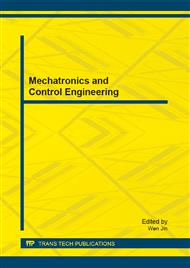[1]
Chao Yin. Brief Discussionon the Present Situation and Prospects of Wind Power Generation in China [J]. shandong power technology,2009,6:14-15.
Google Scholar
[2]
Cheng Qiming, Cheng Yinman, Wang Yingfei, et al. Overview of the Development of Control Technique for Wind Power Generation System [J]. Process Automation Instrumentation, 2012, 1: 1-8.
Google Scholar
[3]
WenqiXing,Qin Chao.Analysis of low voltage ride-through capability for different wind turbines [J]. East China Electric Power,2008,36(12): 21-25.
Google Scholar
[4]
Yuxin Yang, Guanqi Liu, Xiaoke You. Simulation Study of Two Kinds of Reactive Power Compensation Devices Impacts on Low-Voltage Ride Through in Wind Power Farm [J].Electrotechnics Electric,2012,9:6-9.
Google Scholar
[5]
Yongning Chi, Hongliang Guan,Weisheng Wang, et al. Enhancement of Transient Voltage Stability of Induction Generator Based Wind Farm by SVC and Pitch Control [J]. Automation of Electric Power Systems,2007,31(3):95-99.
Google Scholar
[6]
Ligang Zhao,Dazhong Fang,Xiangyu Long, et al.A strategy of reactive power control for wind farm operation using SVC and DFIG [J]. Power System Protection and Control,2012,40(2):45-50.
Google Scholar
[7]
Wei Gu, Xingyuan Li, Wei Wei. Simulation Comparison of the Improved Wind Power Dynamics by Means of SVC and STATCOM [J].Power System and Clean Energy,2009,25(11):70-75.
Google Scholar
[8]
Xing Zhang, Longyun Zhang, Shuying Yang, et al. Low Voltage Ride-through Technologies in Wind Turbine Generation [J]. Proceedings of the Chinese Society of Universities for Electric Power System and its Automation,2008,20(2):1-8.
Google Scholar
[9]
Lulu Zhao, HuaXie, Ying Qiao. Optimization design on low voltage ride-through characteristics of wind farm [J]. Renewable Energy Resources,2011,29(3):pp.127-131.
Google Scholar
[10]
Case C. Connecting Wind Farms to the Grid-what You Need to Know[R]. Vancouver: 2006.
Google Scholar


